Ramesh Singh Summary: Human Development in India-2 | Indian Economy for UPSC CSE PDF Download
COVID-19 and Schooling
The COVID-19 pandemic led to the closure of schools across India in March 2020, which significantly disrupted education, particularly in rural areas. According to the Annual Status of Education Report (ASER) from October 2021, these closures had a profound impact on students' learning and access to education.

Increase in Smartphone Ownership: One notable change during this period was the significant rise in smartphone ownership among children enrolled in government and private schools in rural India. The ownership jumped from 36.3% in 2018 to 61.8% in 2021. This increase presents a potential positive outcome if effectively utilized:
- Reducing the Digital Divide: The rise in smartphone ownership can help bridge the digital divide between rural and urban areas, and across various demographics such as gender, age, and income groups.
- Decreasing Educational Inequalities: With better access to digital resources, educational inequalities can be addressed more effectively, ensuring more equitable learning opportunities for all students.
Government Initiatives to Enhance Accessibility: To capitalize on the increase in smartphone ownership and mitigate the impact of the pandemic on education, the Government has implemented several initiatives as highlighted in the Economic Survey 2021-22:
PM eVIDYA Initiative (Atmanirbhar Bharat Abhiyan, May 2020)
1. One Nation, One Digital Education Infrastructure through DIKSHA
DIKSHA (Digital Infrastructure for Knowledge Sharing) is a national platform for school education available for teachers and learners across India. DIKSHA serves as an educational hub that provides teachers, students, and parents with engaging learning material relevant to the prescribed school curriculum.
Key Features:
- QR-coded textbooks enabling easy access to digital content.
- Interactive video lessons, practice worksheets, and assessments.
- Content in multiple languages to cater to diverse linguistic needs.
- Accessible via smartphones, tablets, and computers.
2. Vidya Daan Portal on DIKSHA for National Content Contribution
Vidya Daan is an initiative that leverages the DIKSHA platform to crowdsource educational content from teachers and educators nationwide. The portal allows educators to contribute digital resources that can be accessed by students across the country.
Key Features:
- Encourages teachers to upload high-quality educational resources.
- Ensures a rich repository of learning materials across different subjects and grades.
- Supports collaborative and participatory content creation.
- Facilitates the sharing of best practices and innovative teaching methodologies.
3. One Class, One TV Channel via Swayam Prabha TV Channel
Swayam Prabha is a group of 34 DTH channels devoted to telecasting educational programs on a 24/7 basis. Each channel is dedicated to a specific class or subject, ensuring comprehensive coverage of the school curriculum.
Key Features:
- "One Class, One TV Channel" initiative to provide grade-specific content.
- Classes and educational content broadcasted in various regional languages.
- Curriculum-aligned lessons to supplement online learning.
- Accessible to students without internet access via DTH services.
4. Extensive Use of Radio, Including Gyan Vani and Community Radio
Gyan Vani and community radio stations have been extensively used to reach students in remote and rural areas where internet connectivity is limited.
Key Features:
- Broadcasts educational programs in regional languages.
- Covers a wide range of subjects and educational levels.
- Includes interactive sessions and live question-answer segments.
- Supports continuous learning for students without digital devices.
5. Dedicated DTH Channel for Differently-Abled Students
The Government has launched dedicated DTH channels to cater specifically to differently-abled students, ensuring inclusive education for all.
Key Features:
- Tailored content designed to meet the learning needs of differently-abled students.
- Use of sign language, subtitles, and other assistive technologies.
- Curriculum-based educational programs.
- Accessible via DTH services, ensuring reach to students without internet access.
SWAYAM
- Online portal for students in grades 9 to 12.
- Over 5 crore students enrolled in 92 courses.
NROER (National Repository of Open Educational Resources)
- Open storehouse with nearly 17,500 e-content pieces for various school subjects.
PRAGYAT
- Guidelines on digital education with a focus on online/blended learning.
MANODARPAN
- Psychosocial support initiative under Atmanirbhar Bharat Abhiyan.
NDEAR (National Digital Education Architecture) (July 2021)
- Aims to support teaching, learning, and educational planning.
- Inter-operable system for the Centre and States/Union Territories.
Vidyanjali (September 2021)
- Web portal connecting Government and Government-aided schools.
- Facilitates volunteers to interact directly, share knowledge, skills, and contribute assets/equipment.
National Education Policy-2020
The National Education Policy 2020, announced by the Government in July, marks a significant overhaul of India's education system. Here are its major highlights:
1. Universalisation of Education
- Aim to achieve 100% Gross Enrolment Ratio (GER) in school education by 2030.
- Focus on bringing 2 crore out-of-school children back into the mainstream through universal access and expansion of open schooling.
2. New Curricular Structure
- Replacement of the current 10+2 system with a 5+3+3+4 curricular structure corresponding to ages 3–18 years.
- The structure is divided into foundational stage (ages 3–8), preparatory stage (ages 8–11), middle stage (ages 11–14), and secondary stage (ages 14–18).
3. Examination Reforms
- Class 10 and 12 board examinations to be made easier, focusing on core competencies rather than rote memorization.
- Introduction of a 360-degree Holistic Progress Card to track students' progress.
4. School Governance
- Implementation of a new standard framework for school governance, emphasizing online self-declaration in the public domain for both public and private schools.
5. Emphasis on Foundational Skills
- Strong emphasis on foundational literacy and numeracy.
- No rigid separation between academic, extracurricular, and vocational streams in schools.
6. Regional Language Emphasis
- Teaching up to at least Grade 5 to be in the mother tongue or regional language, wherever possible.
- No imposition of any language on students.
7. Vocational Education
- Introduction of vocational education from Class 6 onwards, including internships.
8. Teacher Education
- By 2030, the minimum qualification for teaching will be a 4-year integrated B.Ed degree.
9. National Research Foundation
- Creation of the National Research Foundation to foster a strong research culture and build research capacity across higher education.
10. Higher Education Commission of India (HECI)
- Establishment of the HECI as a single overarching umbrella for entire higher education, excluding medical and legal education.
- HECI to have four independent verticals: National Higher Education Regulatory Council, General Education Council, Higher Education Grants Council, and National Accreditation Council.
11. Norms for Governance
- Public and private higher education institutions to be governed by the same set of norms for regulation, accreditation, and academic standards.
The National Education Policy 2020 aims to transform India's education system by focusing on inclusivity, flexibility, quality, and multidisciplinary learning. It has been formulated through extensive consultations and deliberations, aiming to equip the country with the necessary skills and knowledge for the future.
Skill Development
Skill India Mission
- Focuses on skilling, re-skilling, and up-skilling through short-term and long-term training programs.
- Implemented by the government through more than 20 Central Ministries/Departments.
- Major schemes include Deen Dayal Upadhyaya Grameen Kaushalya Yojna (DDUGKY), Rural Self-Employment Training Institutes (RSETI), Deen Dayal Antyodaya Yojana-National Urban Livelihood Mission (DAY-NULM), Pradhan Mantri Kaushal Vikas Yojana (PMKVY), Jan Shikshan Sansthan (JSS), National Apprenticeship Promotion Scheme (NAPS), and Craftsmen Training Scheme (CTS).
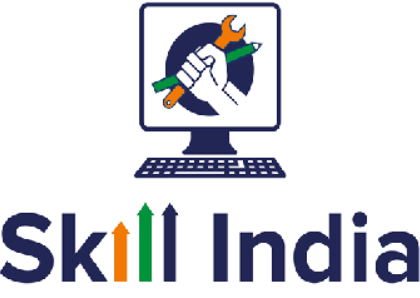
Status of Employment
Generating sufficient wage and self-employment opportunities is a prime goal of the Government for inclusive growth.
Concerns over "jobless growth" have led to increased debate, attributed to a lack of quality data on employment and unemployment.
The Government launched the Periodic Labour Force Survey (PLFS) in 2017-18 to address the challenges of gathering reliable employment data.
The Economic Survey 2022-23 indicates positive trends in the employment scenario in the country post-COVID-19.
Employment Trends
- Studied through household surveys like PLFS and enterprise/establishment surveys such as ASI and QES.
- PLFS for 2020-21 shows improvements in labor force participation rate (LFPR), worker population ratio (WPR), and unemployment rate (UR).
 Manufacturing Sector
Manufacturing Sector
Quarterly Employment Survey (QES)
- Covers nine major sectors, providing insights into terms of employment and gender-wise distribution.
- Regular employees constitute the majority (86.4%), while contractual employees are more prominent in Manufacturing (12.4%) and Construction (19.0%).
Annual Survey of Industries (ASI)
- Provides industrial statistics for the registered organized manufacturing sector.
- Tamil Nadu, Gujarat, Maharashtra, Uttar Pradesh, and Karnataka are the top states in terms of persons engaged in factories.
Formal Employment
- EPFO and ESIC data indicate increased payroll additions, showcasing improved formalization as economic activities picked up.
- Net average monthly subscribers added under EPFO increased from 8.8 lakh (April-November 2021) to 132 lakh (April-November 2022).
MGNREGS (Mahatma Gandhi National Rural Employment Guarantee Scheme)
- Demand for work under MGNREGS is an indicator of the rural labor market.
- Number of households demanding employment reached pre-pandemic levels, with 5.7 crore availing employment.
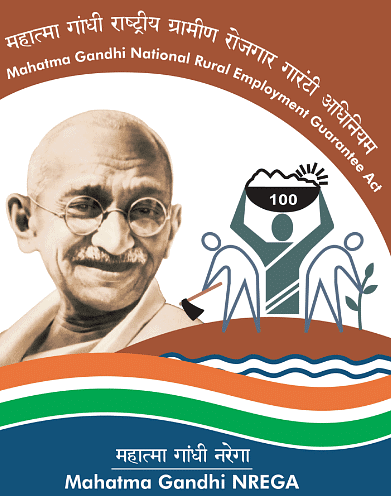
Rural Wages
- Nominal rural wages have steadily increased during 2022-23.
- Growth in nominal wage rates in agriculture is 5.1% for men and 7.5% for women; non-agricultural activities show 4.7% for men and 3.7% for women.
- However, real rural wages have been negatively impacted by higher inflation.
Gig Employment
The evolution of new economic activities, innovation in organizational structures, and changes in the nature of work have been influenced by technological advancements.
Digital platforms serve as enablers for various business models, providing opportunities for both job seekers and providers.
The emergence of two-sided markets facilitated by digital technology has led to the rise of commerce platforms such as Amazon, Ola, Uber, etc.
The gig economy, characterized by flexible work arrangements, has become prevalent in India, with the labor force engaging in gig work under platforms like Uber, Ola, Swiggy, and others.
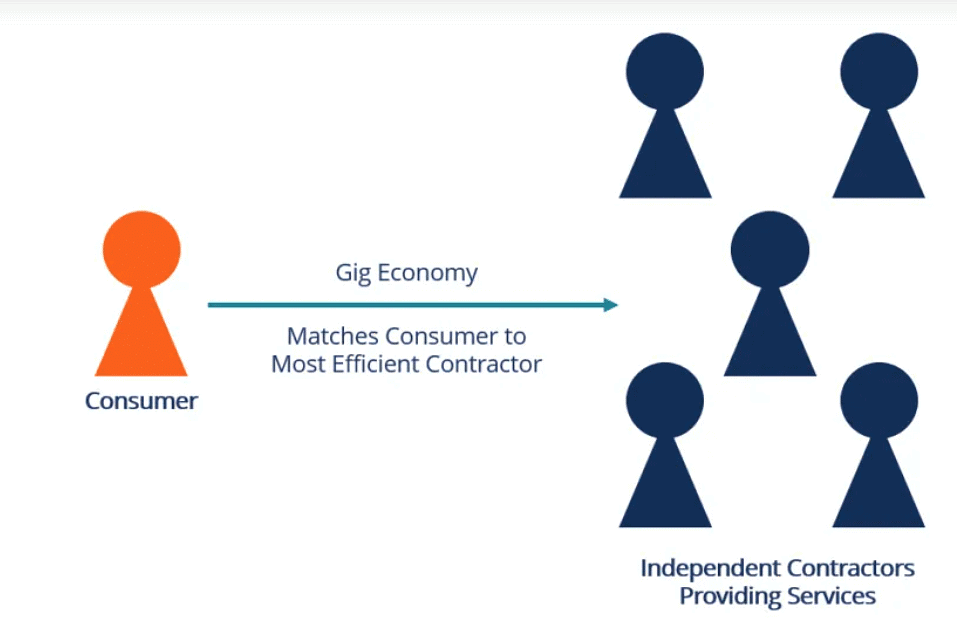 Gig Economy
Gig Economy
During the COVID-19 lockdown, there was a significant growth observed in the online retail business, and a shift towards remote work resulted in increased freelancing, outsourcing, and hiring of skilled services.
The gig economy offers flexibility in job contracts, with shorter and more specific labor contracts compared to traditional employment.
Employment types in the gig economy are typically temporary or contractual, not regular, and the nature of payment is often piece-rate, negotiable, or a combination of wage and profit/reward.
Gig workers have the flexibility to decide when and where to work, providing a unique aspect to employer-employee relationships.
Initially not considered workers or employees under labor laws in India, gig workers lacked legal protections and social security benefits.
The Code on Social Security, 2020, marked a significant change by defining gig workers as unorganized workers, thereby extending social security benefits to this class of workers.
Labour Reforms
Amended the Apprenticeship Act in December 2014 for responsiveness to industry and youth.
- Introduced the "Apprentice Protsaban Yojana" to support MSMEs in engaging apprentices.
- Ongoing efforts to bring a single uniform law for MSMEs for operational efficiency and enhanced productivity.
Launched the Shram Suvidha Portal for grievance redressal and creating a conducive environment for industrial development.
- Features include the Unique Labor Identification Number (LIN), online registration, simplified single online return, and a transparent labor inspection scheme.
Implemented ESIC Project Panchdeep for the digitization of internal and external processes under the Employees' State Insurance Corporation (ESIC) for operational efficiency which focuses on services to employers and insured persons.
Initiated EPF digitization, including a complete database of EPF subscribers.
- Allotment of Universal Account Number (UAN) to facilitate portability of member accounts.
- UAN linkage with bank accounts, Aadhaar cards, and other KYC details for financial inclusion.
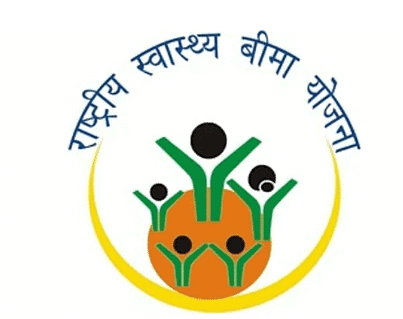
Executed Rashtriya Swasthya Bima Yojana (RSBY) under the Unorganized Workers' Social Security Act, 2008.
- Provides smart card-based cashless health insurance.
- Coverage of ₹30,000 per family per annum for BPL families in the unorganized sector.
Developed the National Council for Vocational Training (NCVT-MIS) Portal for streamlining the functioning of Industrial Training Institutes (ITIs) and managing apprenticeship schemes.
Launched the National Career Services (NCS) Portal to provide a nationwide online platform for job seekers and employers, facilitating dynamic and efficient job matching.
Passed the Payment of Bonus (Amendment) Act, 2015, in December.
- Redefined eligibility for bonus payment from ₹10,000 to ₹21,000 per month.
- Aimed at enhancing bonus payments to employees and expanding eligibility.
Implemented recent labor code reforms in 2019 and 2020, amalgamating, rationalizing, and simplifying 29 existing central labor codes into four labor codes:
- Code on Wages, 2019
- Industrial Relations Code, 2020
- Occupational Safety, Health (OSH), and Working Conditions (W) Code, 2020
- Code on Social Security, 2020.
Health For All
Introduction of Universal Health Care in 2002 through the draft approach paper for the 12th Plan but it initial funding challenges and postponement due to various factors.
Government's commitment to providing accessible, affordable, and equitable quality health care.
- Numerous challenges in delivering efficient health services in India, given resource constraints and diverse health sector requirements.
- Population health significantly influenced by social and environmental determinants.
National Health Policy 2017 aims for universal healthcare with 15% of GDP as the target funding.
- Modeled on public-private partnership (PPP) for effective implementation.
- Indian health sector comprises both public and private providers, offering varied quality of care.
Public sector health services delivered through a network of facilities, including ASHAs, health sub-centers, primary health centers, community health centers, district hospitals, and government medical college hospitals.
Health services focused on four critical areas: preventive healthcare, affordable healthcare, building medical infrastructure, and mission mode interventions.
Burden of Diseases Report (2017) reveals significant health status improvement in individuals from 1990 to 2016.
- Life Expectancy at Birth (LEB) increased by approximately 10 years during 1990-2015.
- Disease burden measured as DALY rate dropped by 36% from 1990 to 2016.
Shift in disease burden from communicable, maternal, neonatal, and nutritional diseases (CMNNDs) to non-communicable diseases (NCDs) and injuries. In 2016, NCDs contributed 55%, injuries 12%, and CMNNDs reduced to 33% of total disease burden.
 Malnutrition
Malnutrition
Malnutrition remains a significant risk factor (14.6%) despite a substantial decrease since 1990.
High levels of air pollution (9.8%) contribute to disease burden, impacting non-communicable and infectious diseases.
Rising burden of NCDs associated with behavioral and metabolic risk factors, including dietary risks, high blood pressure, and high blood sugar.
Unsafe water, sanitation, and handwashing (WaSH) drop from the second leading risk factor in 1990 to the seventh position in 2016.
Launch of National Health Policy 2017 and Ayushman Bharat with components:
- Health and wellness centers for comprehensive primary health care.
- Pradhan Mantri Jan Arogya Yojana (PMJAY) for health cover to 10.74 crore poor and vulnerable families.
Emphasis on four key areas in health care: preventive health care, affordable health care, building medical infrastructure, and mission mode interventions.
Preventive Health Care Initiatives
- Establishment of Ayushman Bharat-Health and Wellness Centres (AB-HWCs)aiming for 1.5 lakh centers by 2022.
- Already, 28,005 centers provide comprehensive primary healthcare services.
- Focus on screening, prevention, control, and management of common NCDs.
- Includes vaccination under Mission Indradhanush, covering 3.39 crore children and 87.18 lakh pregnant women in 680 districts.
- Adoption of multisectoral approach with initiatives like Ladli Laxmi, Eat Right India, Anemia Mukt Bharat, Poshan Abhiyan, and Swachh Bharat Abhiyan.
- Government's ban on commercial operations of e-cigarettes to combat nicotine addiction.
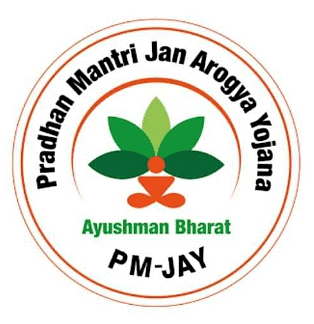
Healthcare Affordability Measures
- Reduction in out-of-pocket expenditure (OoPE) from 64.2% in 2013-14 to 58.7% in 2016-17.
- Initiatives like Free Drugs Service, Free Diagnostic Service, Free Laboratory Services, and Pradhan Mantri Bharatiya Jan Aushadhi Pariyojana (PMBIP).
- Allocation of 52.1% of India's public expenditure on health for primary health care.
- Implementation of Ayushman Bharat-Pradhan Mantri Jan Arogya Yojana (PMJAY), the world's largest health insurance scheme, based on socioeconomic criteria.
Medical Infrastructure Enhancement
- Addressing the doctor shortage with an ambitious plan to upgrade district hospitals into medical colleges.
- Sanction of 141 new medical colleges in the last 5 years.
- Revision of norms for graduate and postgraduate seats, increasing MBBS intake from 150 to 250.
- Operation of Centrally Sponsored Scheme for the establishment of new medical colleges, leading to an increase of 27,235 MBBS and 15,000 PG seats.
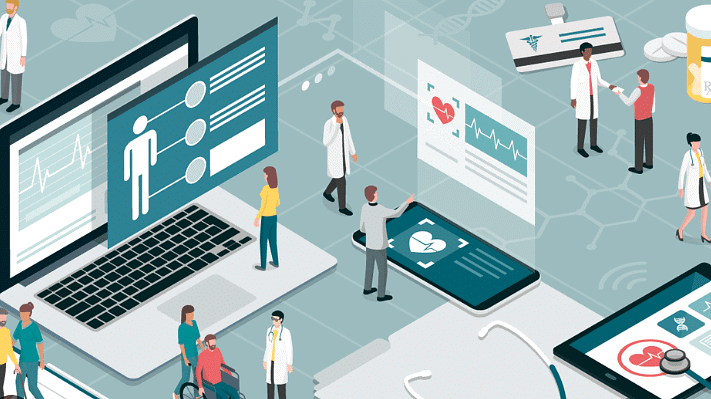 Medical Infrastructure
Medical Infrastructure
Awareness and Action Programs
- Launch of initiatives like SAANS (Success to Neutralise Pneumonia Successfully) and TB Hare Desh Jeetega.
- Adoption of well-defined referral and return linkages for continuum of care in AB-HWCs.
- Integration of tele-consultation at all levels for improved referral advice and virtual consultation by doctors and specialists.
Health Outcome Indicators
- Significant progress in improving health outcomes by eliminating polio, guinea worm disease, yaws, and maternal and neonatal tetanus, as per the Economic Survey 2022-23 and NITI Aayog's report "Health System for A New India: Building Blocks" (2019).
- Social indicators improvement from 2015-20:
- Total Fertility Rate: Improved to 2 children per woman (from 2.2 in 2015-16).
- Sex Ratio at Birth: Improved to 929 females per 1,000 males (from 919 in 2015-16).
- Infant Mortality Rate: Improved to 35.2 per 1000 live births (from 40.7 in 2015-16).
- Under-five Mortality Rate: Improved to 41.9 per 1000 live births (from 49.7 in 2015-16).
- Institutional Birth: Improved to 88.0% (from 78.9% in 2015-16).
- Pregnant Women Anemic: Improved to 52.2% (from 50.4% in 2015-16).
- Improved Sanitation Facility: Improved to 70.2% of households using improved sanitation facilities (from 48.5% in 2015-16).
- Clean Fuel for Cooking: Improved to 58.6% of households using clean fuel (from 43.8% in 2015-16).
Water and Sanitization
- The WHO emphasizes the critical role of clean water, sanitation, and a pollution-free environment in achieving universal health.
- The Government places significant trust in the WHO's concept and gives top priority to providing drinking water, sanitation, and clean air across the nation.
- To efficiently address these priorities, the Government introduces a '10-Year Rural Sanitation Strategy' for rural areas, spanning from 2019 to 2029.
- Simultaneously, the Government initiates the 'Universal Coverage of Water Supply' to ensure widespread access to clean water.
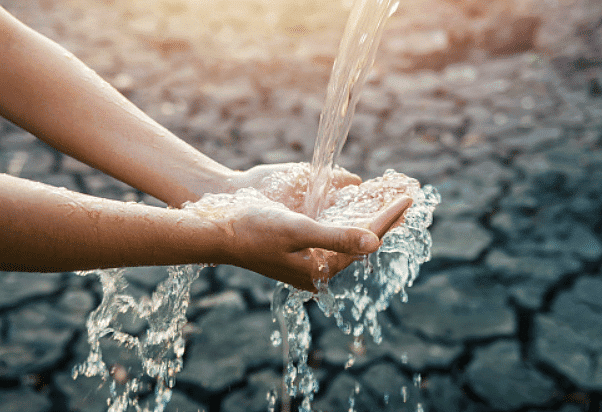
SBM-G
- SBM-G (Swachh Bharat Mission-Grameen) has achieved remarkable success, escalating rural sanitation from 39% in 2014 to 100% by December 2021.
- Phase-II of the mission, spanning from 2021 to 2025, is underway, with a focus on maintaining Open Defecation Free (ODF) status in villages.
- The goal is to cover all villages with Solid and Liquid Waste Management (SLWM), transitioning them from ODF to ODF Plus status.
- Currently, around 1,24,099 villages have been declared ODF Plus under this phase (as of November 2022).
- Notably, the Andaman & Nicobar Islands have achieved the distinction of declaring all their villages as ODF Plus, marking a significant achievement as the first Swachh, Sujal Pradesh.
SBM-U
- SBM-U (Swachh Bharat Mission-Urban) aims to elevate urban sanitation.
- The Union Budget 2021-22highlighted a focus on various aspects under SBM-U:
- Complete fecal sludge management.
- Wastewater treatment.
- Source segregation of garbage.
- Reduction in single-use plastics.
- Reduction in air pollution by effectively managing waste from construction and demolition activities.
- Bioremediation of all legacy dump sites.
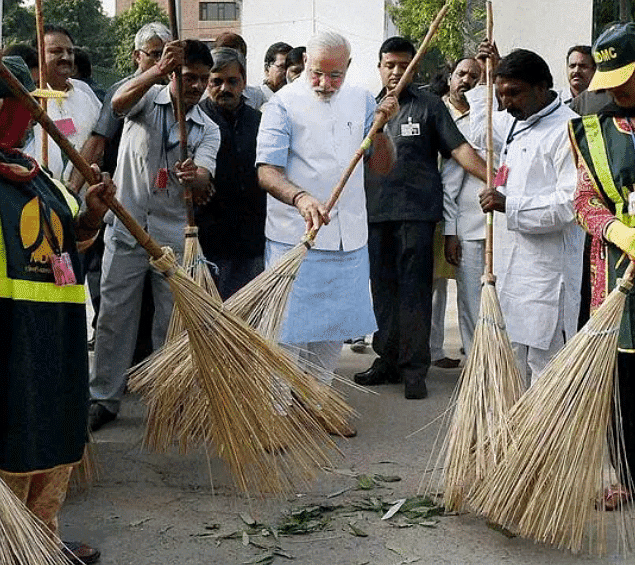 Swachh Bharat Mission
Swachh Bharat Mission
Jal Jeevan Mission
- Jal Jeevan Mission aims to significantly enhance the quality of life, particularly in ruralareas, with the following goals:
- Ensure every rural household receives a reliable supply of potable water through a Functional Tap Water Connection (FTWC).
- Target a service level of 55 liters per capita per day (lpcd) regularly on a long-term basis.
- Provide FTWC to every rural household through collaboration with States.
- The program operates as a decentralized, demand-driven, and community-managed initiative. Gram Panchayats play a pivotal role in planning, implementing, managing, operating, and maintaining water supply systems.
- Adheres to the principle of 'no one is left out,' employing sub-schemes like Har Ghar Jal Block, Har Ghar Jal Panchayat, and Har Ghar Jal Gaon. In 2020-21, Goa achieved the milestone of 100% FTWC coverage, including differently-abled households under Har Ghar Jal Rajya.
- At the scheme's launch in August 2019, approximately 3.23 crore (17%) rural households out of the total 18.93 crore had tap water supply. The objective is to provide FTWC to the remaining 15.70 crore (83%) rural households by 2024.
Jal Jeevan Mission-Urban
- Jal Jeevan Mission-Urban was introduced through the Union Budget 2021-22.
- The mission focuses on providing a new drinking water supply in urban areas.
- Aims to achieve a "universal water supply" across all urban local bodies, totaling 4,378.
- The scheme targets serving a population of 2.86 crores in urban areas.
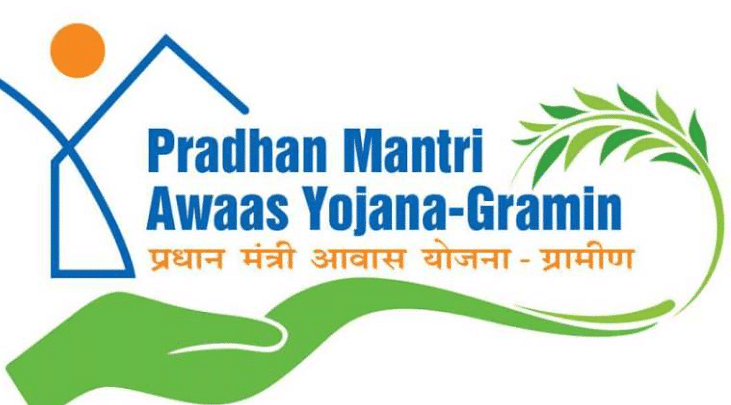
Housing For All
"Housing for All" is the government's slogan with a cut-off year of 2022. Two schemes, Pradhan Mantri Awaas Yojana-Gramin (PMAY-G) and Pradhan Mantri Awaas Yojana-Urban (PMAY-U), are implemented to achieve this goal. According to the NSO survey on 'Drinking Water, Sanitation, Hygiene and Housing Condition in India 2018':
- Approximately 76.7% of households in rural areas and about 96.0% in urban areas have houses with pucca structures.
- Significant progress is observed under PMAY-G, with a more than fourfold increase in completed houses within a year (from 11.95 lakh in 2014-15 to 47.33 lakh in 2018-19).
- The cumulative target for 2019-22 is 1.95 crore houses, with 5,27,878 houses delivered by January 17, 2020.
- Under PMAY-U, 1.03 crore houses were sanctioned against the assessed demand of 1.12 crore. Construction has started for 61 lakhs, and 32 lakhs have been delivered as of January 1, 2020.
- PMAY-U caters to diverse social groups, including senior citizens, construction workers, domestic workers, artisans, differently-abled (Divyang), transgender, and leprosy patients.
- Women's empowerment is emphasized by granting them ownership of the house.
Social Sector Expenditure
- The Government has exhibited a rising focus on social sector expenditure since 2015-16, emphasizing various aspects of citizens' social well-being.
- Enhanced expenditures have positively impacted social indicators, contributing to an overall improvement.
- Due to the pandemic, the government's fiscal position stretched as free food and vaccines wereprovided to a large population.
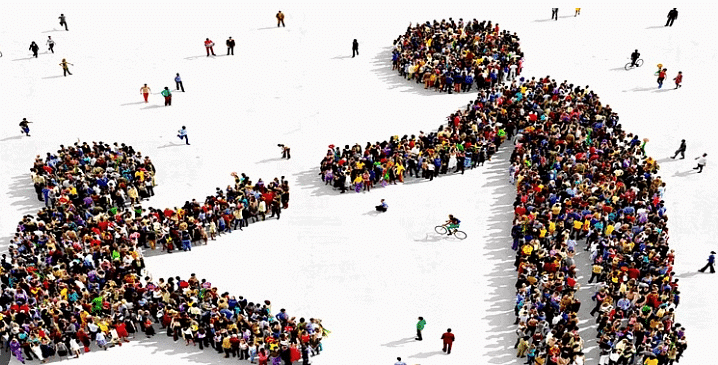
- However, by 2022-23, the fiscal position had significantly improved.
- The latest data on General Government expenditures for social services in 2022-23 (BE) compared to 2021-22 (RE)reveals the following:
- Total budgetary expenditure increased to ₹80.08 lakh crores in 2022-23 (BE) from ₹74.53 lakh crores in 2021-22 (RE).
- The social sector's share was 26.6% (BE) of the total expenditure, up from 26.1% (RE) in the previous year.
- Education received 9.5% of the total expenditure, compared to 9.1% in 2021-22.
- Health accounted for 6.9% of the total expenditure, maintaining the same level as in 2021-22.
- Total expenditure on the social sector as a ratio of GDP was 8.3% in 2022-23 (BE) compared to 8.2% in 2021-22 (RE).
- Ratios of various segments of the social sector in terms of GDPwere as follows:
- Education: 2.9% of GDP (unchanged from 2021-22).
- Health: 2.1% of GDP (down from 2.2% in 2021-22).
Policy Suggestions
- Social infrastructure yields positive externalities, playing a significant role in a country's economic development and welfare.
- Education and health are empirically proven to impact economic growth, and investing in human capital enhances workforce productivity and population welfare.
- Recommended actions for governments include:
- Improving the quality of education, emphasizing the need for qualified teachers.
- Overcoming development challenges through innovative service delivery models.
- Enhancing expenditures on education, skill development, and health for holistic development.
- Overhauling the subsidy regime for rationalization and improved service delivery, utilizing technology-enabled Direct Benefit Transfers (DBTs) like JAM (Jan Dhan-Aadhaar-Mobile).
- Incorporating behavioral dimensions in policymaking, as demonstrated in the sanitation campaign, to realize desired results.
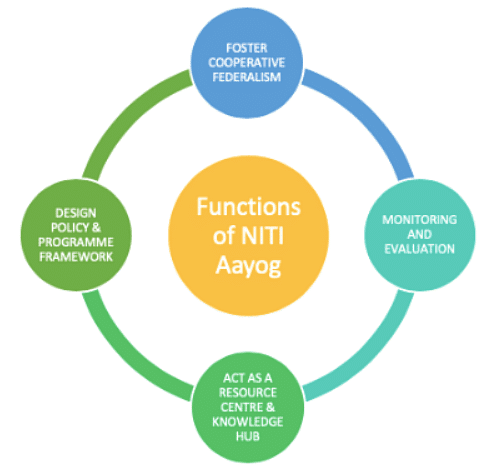
- Integrating social sector initiatives at the national, state, and local levels with support from organizations like NITI Aayog.
- Strengthening local bodies (PRIs) to boost the social sector and promote citizen awareness and participation.
- Orienting the private sector toward social infrastructure, leveraging their funds and expertise.
- Encouraging the use of ICT to bridge information gaps.
- Sensitizing stakeholders to the dangers of climate change and promoting sustainable behavior for inclusive growth.
- Addressing vulnerabilities in India's health sector by enhancing expenditures and adopting a mission mode approach.
- Adapting education to alternative models beyond classrooms in response to disruptions like the COVID-19 pandemic.
- Channeling women's economic potential through ecosystem services to capitalize on the gender dividend for future development.
- Dovetailing different aspects of human development with technology for revolutionary innovation and technological-led growth.
|
138 videos|431 docs|128 tests
|
FAQs on Ramesh Singh Summary: Human Development in India-2 - Indian Economy for UPSC CSE
| 1. What is the impact of COVID-19 on schooling in India? |  |
| 2. What are the key provisions of the National Education Policy-2020? |  |
| 3. How does gig employment contribute to the status of employment in India? |  |
| 4. What are the recent labour reforms in India? |  |
| 5. What are the health outcome indicators in India? |  |





















